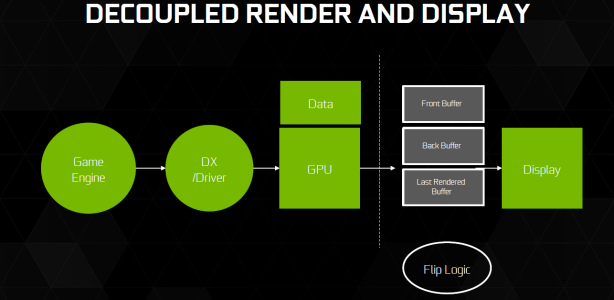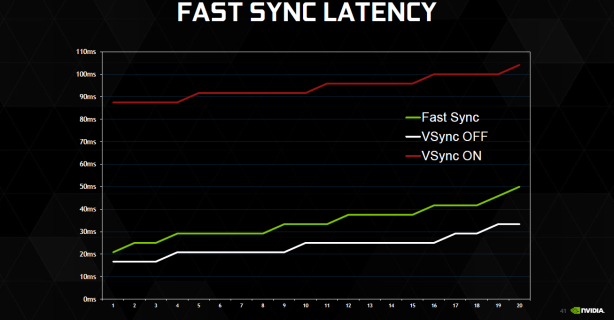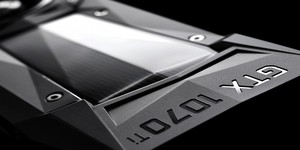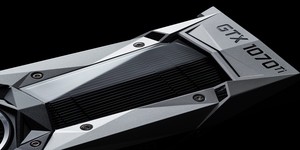Staying in Sync: Fast Sync
In many esports titles, as well as in older games generally, gaming with extremely high frame rates is common. Even with 120Hz and 144Hz monitors, gamers running decent hardware and these games can easily pump out frame rates far in excess of the monitor's refresh rate. Traditionally, this causes tearing whenever the display refresh occurs in the middle of a frame render, and constant tearing at high fps is perceived as jitter. This can be eliminated with v-sync, but then you are forcing the GPU to wait until the refresh before a new frame is rendered, effectively bottlenecking it and also introducing input latency. For gamers, and especially esports pros, neither jitter nor input lag are desirable. It is these issues that Fast Sync, another new Pascal feature, seeks to address.With Pascal, Nvidia is decoupling the rendering front-end of the pipeline from the back-end display side. When Fast Sync is running, the GPU renders as if v-sync is off i.e. delivering frames to the display buffers as fast as possible without constraint. Then, to the traditional front and back buffer pairing, Nvidia adds a Last Rendered Buffer (LRB), which is kept updated with a copy of the last full frame rendered into the back buffer. Or, rather, Pascal's new flip logic simply renames the buffers so that it functions in this manner. Anyway, as soon as the display is ready to refresh, the LRB becomes the front buffer, delivering the most up-to-date possible instance of a full frame, while the GPU continues to render to the back buffer.
As such, the GPU is never forced to stall or slow down and only full frames are ever displayed, thus eliminating tear and jitter. Input lag is not totally kept to a minimum, but it is significantly reduced, as the graph below from Nvidia suggests. Nvidia says it's only about 8ms slower than with v-sync off. This is the sort of thing only really applicable to those who take their esports seriously, but it's clever stuff nonetheless.

MSI MPG Velox 100R Chassis Review
October 14 2021 | 15:04











Want to comment? Please log in.